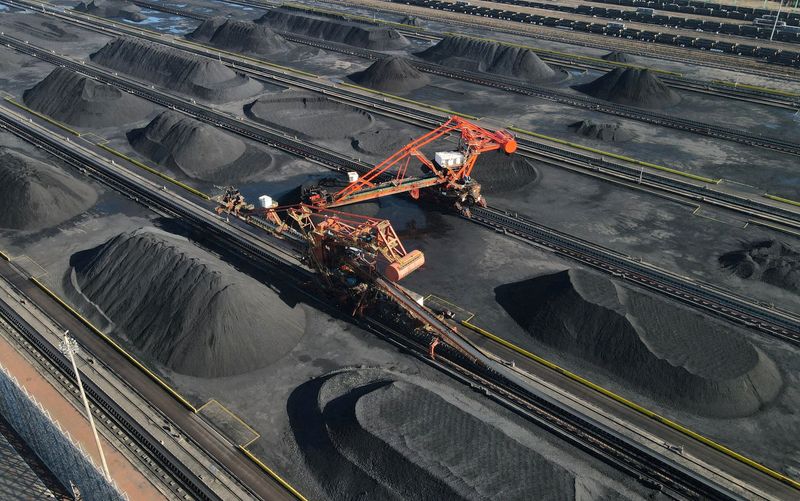
By Clyde Russell
LAUNCESTON, Australia (Reuters) – China imported a record amount of coal in 2024, driving world imports of the fuel to an all-time high. So why are coal exporters starting 2025 in a deep blue funk?
For coal exporters, China is both their saviour and tormentor, as the record import volumes are only possible because seaborne prices have dropped to multi-year lows.
Prices for export coal have declined in order to remain competitive with China’s domestic prices, with the world’s biggest producer and importer of coal driving what happens in global coal markets.
China’s coal imports rose to an all-time high of 542.7 million metric tons in 2024, up 14.4% from 2023’s 474.42 million tons, according to customs data released on Monday.
There were several factors driving the increase, including lower hydropower generation, which boosted demand for thermal coal for electricity production.
However, it’s likely the main factor behind China’s record imports was the decline in prices for seaborne coal from top exporters Indonesia and Australia.
Indonesian coal with an energy content of 4,200 kilocalories per kg (kcal/kg) was assessed by commodity price reporting agency Argus at $49.97 a ton in the week to Dec. 30, down 13.5% for the year and the lowest since April 2021.
Australian 5,500 kcal/kg coal, a grade popular with Chinese buyers, was assessed at Newcastle Port by Argus at $81.77 a ton in the week to Dec. 27, down 12.3% for the year and the weakest since July 2021.
The prices have started 2025 softly, with the Australian grade dropping to $81.01 a ton in the week to Jan. 10, while the Indonesian fuel slipped to $49.67.
The decline in seaborne thermal coal prices came as China’s domestic prices also weakened, with consultants SteelHome assessing coal at Qinhuangdao port at 775 yuan ($106) a ton on Monday.
This is slightly up from the recent low of 765 yuan a ton on Dec. 27, which was the weakest since June 2023, and down 17.6% from the 2024 high of 940 yuan in late February.
There is a bit of a chicken-and-egg situation with coal prices and import volumes, and it’s not clear whether the strong level of shipments is a result of weakening prices, or if softer prices have allowed volumes to remain robust.
For China, imports picked up in the second half of the year as seaborne prices were declining, with the strongest month being November’s 54.98 million tons.
But India, the world’s second-biggest coal importer, showed a different pattern, with imports declining in the second half of 2024 even as prices weakened.
India’s total coal imports were 228.72 million tons in 2024, down a modest 2.7% from the record of 234.99 million in 2023, according to data compiled by commodity analysts Kpler.
UNCERTAIN 2025
The question for coal producers is whether seaborne demand will be as strong in 2025 as it was in 2024, and the outlook is less certain.
Global seaborne coal imports were 1.279 billion tons in 2024, up marginally from 1.276 billion the prior year, according to Kpler.
China may import less in 2025, with the China Coal Transportation and Distribution Association stating in a seminar last week that it expects imports to fall to 525 million tons.
India may also see lower imports if domestic output continues to rise and the government continues policies to encourage more consumption of local production.
Outside of the big two importers, it’s hard to make a bullish case. Demand in Asia’s other large buyers, Japan and South Korea, is likely to remain steady at best.
Europe’s imports fell for a second year in 2024 to 88.52 million tons from 108.98 million in 2023, according to Kpler data.

Despite the loss of pipeline Russian natural gas supplies, it’s unlikely utilities will switch back to coal given environmental concerns.
The views expressed here are those of the author, a columnist for Reuters.
This post is originally published on INVESTING.


